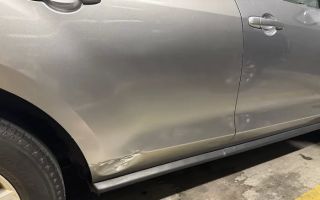How to Handle a Car with Low Engine Oil: A Step-by-Step Guide
Experiencing low engine oil can be alarming, but knowing how to handle it can save your engine from costly damage. As a car owner, you’ll want to understand how to properly address this situation if it arises, especially if you’re on the road. Here's a step-by-step guide on how to manage a car with low engine oil and when to seek professional help, ensuring your vehicle stays in good shape and continues to run smoothly.
- Step 1: Recognizing the Signs of Low Engine Oil
- Step 2: Safely Checking the Oil Level
- Step 3: Adding Oil to Your Engine
- Step 4: When to Call for Professional Help
Step 1: Recognizing the Signs of Low Engine Oil
The first step in handling a low engine oil situation is recognizing the signs that your car’s oil level is low. Some common symptoms include:
- Warning Light: The most obvious indicator is the oil pressure warning light on your dashboard. If this light comes on, it's a sign that the oil level is critically low.
- Engine Noise: A noticeable increase in engine noise or a tapping sound could signal low oil levels, as oil lubricates the engine components.
- Overheating: Low oil can cause the engine to overheat because it’s not being properly lubricated, leading to friction and higher temperatures.
- Burning Oil Smell: If you notice a burnt oil smell, it may indicate that the oil is not at the correct level or there’s an oil leak.
If you experience any of these symptoms while driving, it’s essential to stop safely and inspect your oil level as soon as possible to prevent further damage.

Walter's Auto Repair
5508 Atlantic Ave, Long Beach, CA 90805, USA
Step 2: Safely Checking the Oil Level
If you notice any of the signs mentioned above, the next step is to check your engine oil. Here's how you can do it:
- Turn off the engine: Always turn off your vehicle and wait for it to cool down before checking the oil level to avoid burns or injury.
- Locate the dipstick: Open the hood of your car and find the oil dipstick. It’s usually located near the engine, and it often has a brightly colored handle for easy identification.
- Pull out the dipstick: Pull out the dipstick and wipe it clean with a rag or paper towel. Insert it back into the tube fully and then pull it out again to check the oil level.
- Check the oil level: The dipstick should show two marks indicating the minimum and maximum oil levels. If the oil is below the minimum mark, you’ll need to add oil.
Checking your oil regularly is an essential part of car maintenance. If your oil level is low, proceed to add the appropriate type of oil, or if you’re unsure, it’s best to consult a professional.

Nava Auto Repair
38950 30th St E C, Palmdale, CA 93550, USA
Step 3: Adding Oil to Your Engine
If your oil level is low, adding oil is a straightforward process. Here’s how you can do it:
- Choose the right oil: It’s important to use the type and grade of oil recommended in your vehicle’s owner’s manual. You can often find this information on the oil cap or the oil change sticker inside your car.
- Find the oil filler cap: The oil filler cap is usually located on top of the engine. Open it, and carefully pour the oil into the engine, adding small amounts at a time to avoid overfilling.
- Check the level again: After adding oil, wait a few seconds and recheck the dipstick to ensure the oil level is within the recommended range.
- Close the cap and clean up: Once the oil is at the correct level, replace the oil filler cap securely and dispose of any waste oil or rags properly.
It’s essential not to overfill the oil, as this can also lead to engine problems. Adding oil gradually and rechecking the level ensures you only put in what’s necessary.
Step 4: When to Call for Professional Help
Sometimes, even if you add oil, you may notice the problem persists. If you continue to experience low oil levels or symptoms such as engine overheating, you may have an underlying issue such as a leak or a problem with your oil pump. In these cases, it’s time to seek professional help.
Call for towing assistance for vehicles stuck in snow or contact a mechanic to inspect your vehicle. Additionally, if you’re stuck in a remote location and need immediate help, it’s best to contact a 24/7 towing service that can provide roadside assistance.
By knowing when to call for help, you can avoid major engine damage and get back on the road safely.
Conclusion
Handling a car with low engine oil doesn’t have to be overwhelming. By recognizing the signs early, checking and adding oil yourself, and knowing when to call for professional assistance, you can maintain your car’s health and prevent expensive repairs. If you ever find yourself in a situation where you're unsure or need immediate assistance, don’t hesitate to call for towing help to avoid further damage.


























